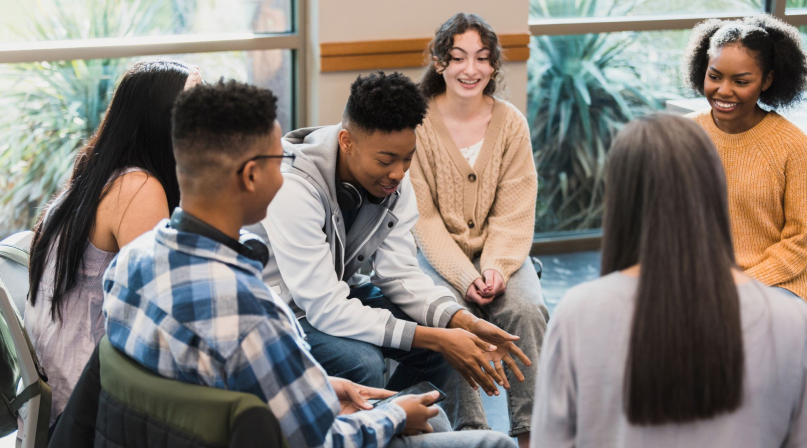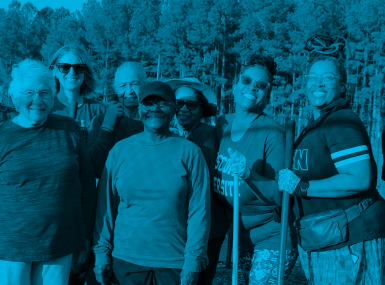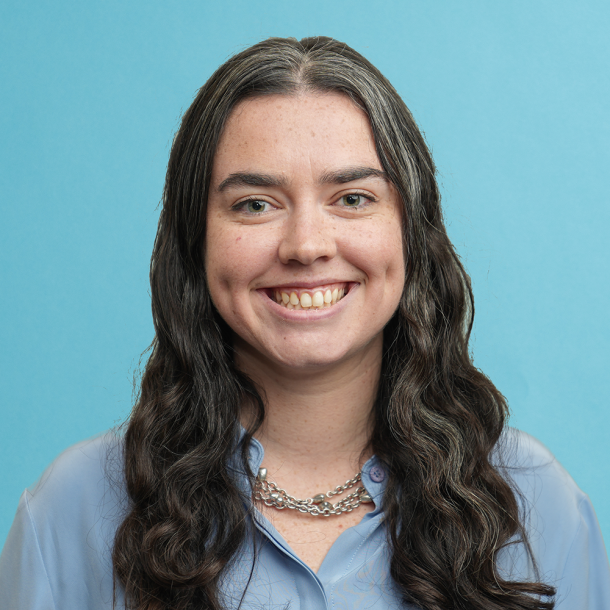County taps into youth power for public health engagement

If youth have something to say, Polk County, Minn. wants to hear it. Members of the Polk County Public Health Youth Advisory Board provide feedback on existing and new public health programming and make the county aware of emerging community needs for youth.
In return, the teens get a better understanding of how policy works and the government’s role in public health, according to Sarah Reese, Polk County Public Health administrator and director.
“By engaging youth in our policies, our practices, our services, our procedures, we’re getting a fresh perspective, energy, information and certainly knowledge that we wouldn’t have otherwise,” Reese said. “Our work, much of the time, is with youth or partners that work with youth, so it was important for us to hear it right from their lived experience.”
Public health priorities that have been identified by Youth Advisory Board members include mental health and reproductive and sexual health, according to Reese.
Halle Nicholas, a high school junior on the Youth Advisory Board, said the board’s discussions around youth mental health and substance use have been particularly powerful for her.
“I think that being able to use my voice to advocate for those that may feel like they are not heard is very important,” Nicholas said.
Polk County Public Health also uses the youth perspective to tailor their social media content and messaging, Reese said.
“What speaks to them? Are we speaking the language and appealing to them in the way that they want to?”
“It could be marketing, it could be messaging, it could be a program that people are thinking about, so whatever is on the minds of public health staff, they can bring that to the Youth Advisory Board for them to provide feedback.”
Thirty years ago, Reese served as a youth representative on Polk County’s health services advisory committee (the committee was made up of adults and had one designated position for youth). In 2018, health services advisory committees were no longer required as part of governance, and Polk County Health took a step back to assess the county’s public health needs.
As a result, the department created the Youth Advisory Board, seeing it as an opportunity to merge civic engagement and leadership development, Reese said.
“One of the key things from the beginning was to give back to the students too, in some way, shape or form,” said Kirsten Fagerlund, who is a member of the Polk County Health community wellness team.
“Speaking to what’s current and what’s on the minds of the youth, but also providing some leadership development, public speaking, maybe some parliamentary procedures, how to run a meeting, how to mediate and moderate differences amongst them.”
The Youth Advisory Board is made up of high school students across Polk County — public health staff aim to engage two to three students per school district to get a more comprehensive youth perspective, according to Reese. Students at public and private high schools, as well as teens at the Red River Valley Juvenile Center in the county, are encouraged to participate.
Some members have been nominated by their school counselors or school leadership team, and current members share who among their peers could potentially bring a new perspective to the board, as well, Reese said.
“We are one of the largest geographic counties in Minnesota and really have some unique differences across the county,” Reese said. “So, we’ve been really intentional to try and have representation from all school districts in Polk County.”
Polk County Public Health staff also use Minnesota Student Survey data to assess what youth are wanting to see in the public health space, according to Reese.
The 2019 Minnesota Student Survey found that adult mentorship was important to youth, particularly those who struggled with mental health issues, so the Youth Advisory Board created a “Safe Places to Land” initiative, which provided adults in school settings with a kit on what to do when a student confides in them and how to show they care — at some schools, Youth Advisory Board members identified teachers or coaches, but others identified janitors, cafeteria staff and receptionists as that “safe person,” Reese said.
“Surprisingly enough, a lot of times, it’s those other people that are in the building every day that create that culture of safety,” she said.
Youth Advisory Board members are encouraged to listen to their peers and share their perspectives as well, “to bring all youth voices to the table,” Fagerlund said.
“We’re pretty clear in that they are representing their peers, so to listen and open their eyes at the culture of their school and their environment a little differently, and to bring that back to us,” Fagerlund said. “And then also just to think wide, as youth.
“They’re thinking about their school, their peers, but then also to think about peers in their county, in Northwest Minnesota, and then to think globally too — especially when we talk about justice and ethics and thinking about the plate of life that another student might have that they’re not familiar with, but to put themselves as much as they can into that person’s world, and to think about the services and the world that helps them be healthier.”
Related News

Announcing 2025 NACo Achievement Award Winners
NACo is pleased to announce the winners for the 2025 Achievement Awards. Through a non-competitive application process, noteworthy programs receive awards in 18 categories that cover a vast range of county responsibilities.

America’s Counties Recognize April 2025 as National County Government Month
America’s Counties this month are joining the National Association of Counties (NACo) in recognizing National County Government Month (NCGM). Throughout April, counties will honor the county workforce, educate residents about local programs and services and celebrate the county role in the intergovernmental partnership.

Celebrate 2025 National County Government Month
Join us in celebrating National County Government Month (NCGM) 2025! Since 1991, NACo has encouraged counties to utilize NCGM to actively promote county roles and responsibilities in serving residents.
